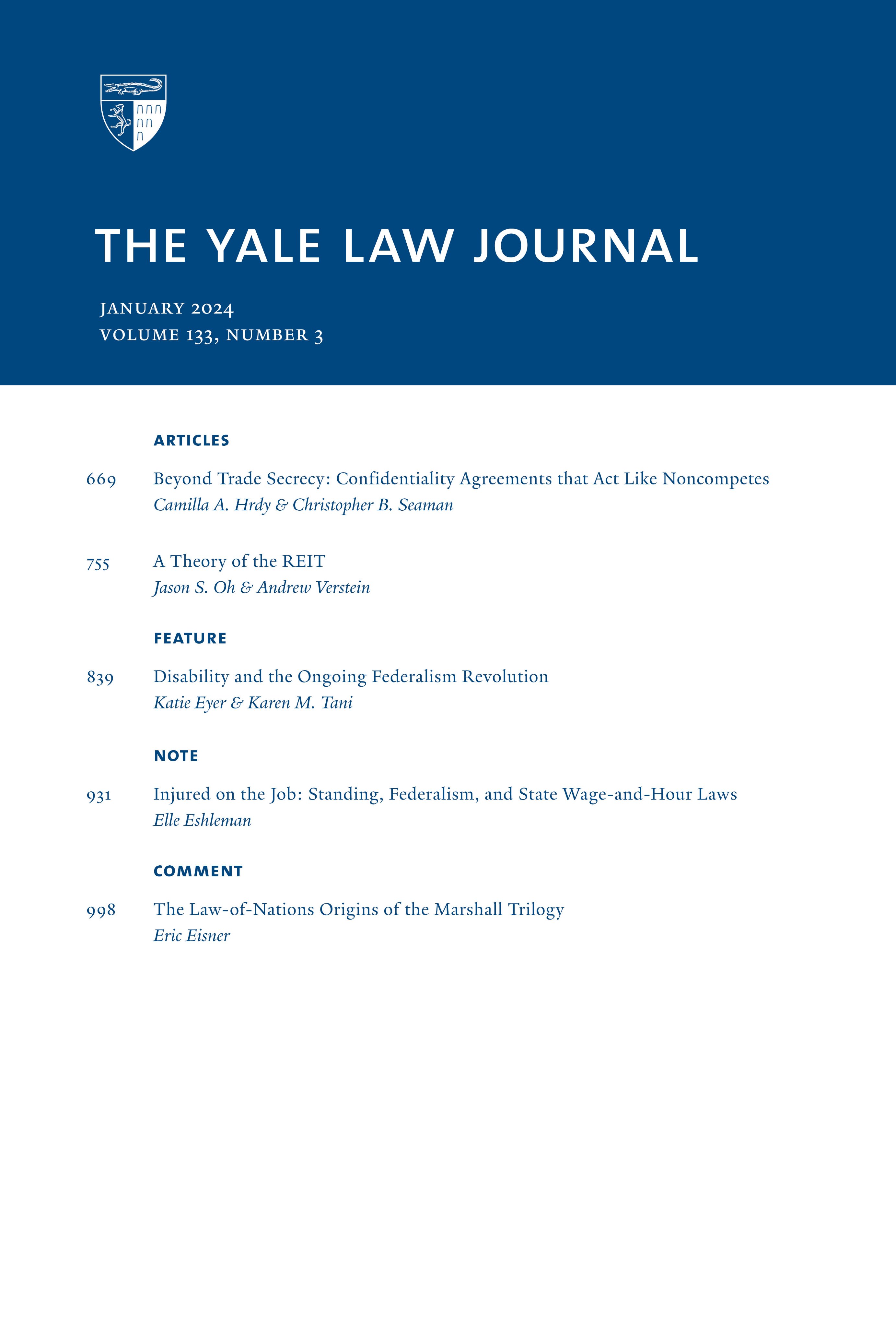为人父母的本质
IF 5.2
1区 社会学
Q1 LAW
引用次数: 29
摘要
奥贝格费尔诉霍奇斯案(Obergefell v. Hodges)之后,法院和立法机构声称,在原则上,他们已经否定了在家庭法律规制中,异性对同性伴侣的特权,以及男性对女性的特权。但是,正如围绕辅助生殖技术(ART)的斗争所表明的那样,在父母承认的法律中,这种特权仍然存在。那些打破传统性别和性规范的人——将母性与生物关系分开的女性(例如,通过代孕),以及与同性伴侣组成家庭的女性和男性——经常发现他们的亲子关系受到了折扣。本文探讨了在父母承认法中充分维护性别和性取向平等的意义。它通过将通过抗逆转录病毒疗法形成的家庭的治疗置于更长的亲子史中来实现这一目标。当代法律中持续存在的不平等可以追溯到更早的时代。在最初通过婚姻来定义亲子关系的过程中,普通法将亲子关系置于性别等级森严的异性恋秩序之中。最终,法院和立法机构否定了普通法制度,并保护婚外形成的亲生亲子关系。虽然这种从生物学联系中获得父母认可的努力受到平等主义冲动的推动,但它也是在性别分化的异性恋范式中运作的。今天,法律越来越多地照顾到通过抗逆转录病毒治疗形成的家庭,这样做不仅在生物学上而且在社会上承认父母。然而,当法院和立法机构在现有的围绕婚姻和生物关系组织的框架内处理女性和同性伴侣的父母权利要求时,它们再现了这些框架中嵌入的一些基于性别和性的不对称。随着血缘关系继续锚定非婚父母关系,未婚的男女同性恋者面临着获得父母认可的障碍。随着性别分化,异性恋家庭继续构建婚姻父母关系,法律围绕生母组织合法家庭。在这种背景下,异性伴侣中的非亲生母亲,以及同性伴侣中的非亲生父亲,都在努力争取父母的认可。为了保护妇女和男女同性恋者为人父母的利益,本文敦促更多地强调为人父母的社会层面。当然,正如我们的普通法起源所表明的那样,法律长期以来一直承认父母关系是基于社会而不是简单的生理基础。但今天,对平等的承诺需要重新调整家庭法,使父母的认可更充分、更公平地体现在社会贡献上。虽然本文主要关注州一级家庭法的改革,但它也考虑到最终的宪法监督。本文章由计算机程序翻译,如有差异,请以英文原文为准。
The Nature of Parenthood
In the wake of Obergefell v. Hodges, courts and legislatures claim in principle to have repudiated the privileging of different-sex over same-sex couples and men over women in the legal regulation of the family. But as struggles over assisted reproductive technologies (ART) demonstrate, in the law of parental recognition such privileging remains. Those who break from traditional norms of gender and sexuality — women who separate motherhood from biological ties (for instance, through surrogacy), and women and men who form families with a same-sex partner — often find their parent-child relationships discounted.
This Article explores what it means to fully vindicate gender and sexual-orientation equality in the law of parental recognition. It does so by situating the treatment of families formed through ART within a longer history of parentage. Inequalities that persist in contemporary law are traceable to earlier eras. In initially defining parentage through marriage, the common law embedded parenthood within a gender-hierarchical, heterosexual order. Eventually, courts and legislatures repudiated the common-law regime and protected biological parent-child relationships formed outside marriage. While this effort to derive parental recognition from biological connection was animated by egalitarian impulses, it too operated within a gender-differentiated, heterosexual paradigm.
Today, the law increasingly accommodates families formed through ART, and, in doing so, recognizes parents on not only biological but also social grounds. Yet, as courts and legislatures approach the parental claims of women and same-sex couples within existing frameworks organized around marital and biological relationships, they reproduce some of the very gender- and sexuality-based asymmetries embedded in those frameworks. With biological connection continuing to anchor nonmarital parenthood, unmarried gays and lesbians face barriers to parental recognition. With the gender-differentiated, heterosexual family continuing to structure marital parenthood, the law organizes the legal family around a biological mother. Against this backdrop, nonbiological mothers in different-sex couples, as well as nonbiological fathers in same-sex couples, struggle for parental recognition.
To protect the parental interests of women and of gays and lesbians, this Article urges greater emphasis on parenthood’s social dimensions. Of course, as our common law origins demonstrate, the law has long recognized parental relationships on social and not simply biological grounds. But today, commitments to equality require reorienting family law in ways that ground parental recognition more fully and evenhandedly in social contributions. While this Article focuses primarily on reform of family law at the state level, it also contemplates eventual constitutional oversight.
求助全文
通过发布文献求助,成功后即可免费获取论文全文。
去求助
来源期刊

Yale Law Journal
LAW-
CiteScore
4.50
自引率
6.20%
发文量
0
期刊介绍:
The Yale Law Journal Online is the online companion to The Yale Law Journal. It replaces The Pocket Part, which was the first such companion to be published by a leading law review. YLJ Online will continue The Pocket Part"s mission of augmenting the scholarship printed in The Yale Law Journal by providing original Essays, legal commentaries, responses to articles printed in the Journal, podcast and iTunes University recordings of various pieces, and other works by both established and emerging academics and practitioners.
 求助内容:
求助内容: 应助结果提醒方式:
应助结果提醒方式:


